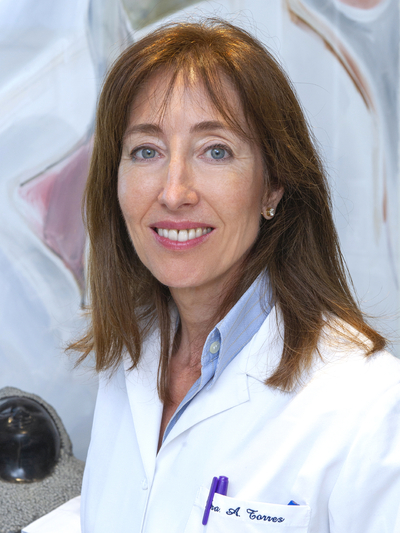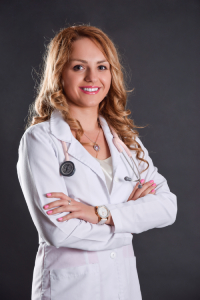

 FACULTATIVO ESPECIALISTA CIRUGÍA PLÁSTICA, ESTÉTICACirugía Plástica, Estética y ReparadoraCentro Médico Teknonen/health-centers/centro-medico-teknon
FACULTATIVO ESPECIALISTA CIRUGÍA PLÁSTICA, ESTÉTICACirugía Plástica, Estética y ReparadoraCentro Médico Teknonen/health-centers/centro-medico-teknon FACULTATIVO ESPECIALISTA CIRUGÍA PLÁSTICA, ESTÉTICACirugía Plástica, Estética y ReparadoraCentro Médico Teknonen/health-centers/centro-medico-teknon
FACULTATIVO ESPECIALISTA CIRUGÍA PLÁSTICA, ESTÉTICACirugía Plástica, Estética y ReparadoraCentro Médico Teknonen/health-centers/centro-medico-teknon FACULTATIVO ESPECIALISTA CIRUGÍA PLÁSTICA, ESTÉTICACirugía Plástica, Estética y ReparadoraCentro Médico Teknonen/health-centers/centro-medico-teknonHospital Quirónsalud Barcelonaen/health-centers/hospital-quironsalud-barcelona
FACULTATIVO ESPECIALISTA CIRUGÍA PLÁSTICA, ESTÉTICACirugía Plástica, Estética y ReparadoraCentro Médico Teknonen/health-centers/centro-medico-teknonHospital Quirónsalud Barcelonaen/health-centers/hospital-quironsalud-barcelona
Aumento de pecho mediante prótesis (Mejora el volumen y la forma del pecho)
Many women are not satisfied with the size or shape of their breasts, either due to genetic causes or pregnancy.
Augmentation mammoplasty is a surgical technique aimed at improving the volume and shape of women’s breasts, helping them feel better about themselves.
In the very first consultation we define the type of implant and the volume that best meets your expectations.
We normally recommend implants with sizes that correspond with the measurements of the breasts and thorax, so that they can be filled normally.
To select the size of the implant with precision and establish ideal dimensions, the desired length, height and projection are all measured.

Preoperative
After you have decided to undergo the procedure, there will be preoperative work (ECG, mammography, a full range of tests and a coagulation analysis).
At the second appointment, Dr. A.M. Torres will provide you with full details concerningthe surgery. We recommend a preoperative course of homeopathic medicine (Boiron®).
Anesthesia
The procedure is performed at the Quirón Teknon Hospital under local anaesthesia and sedation.
General anaesthesia is only required when a retro-muscular implant is inserted. Anaesthesia is administered by expert anaesthetists from the CEDO Group.
Surgical procedure
In augmentation mammoplasty, the best technique is determined depending on the characteristics of the skin, breast tissue, bone structure and age of the patient.
There are different methods for inserting the prosthesis, which are primarily: axillary (underarm), aureole (nipple) or sub-mammary.
Precisely where the implant will be placed needs to be determined with the patient: behind the muscle, behind the fascia or behind the mammary gland.
Hospitalization
The procedure takes approximately one hour.
In general, patients are admitted to the Quirón Teknon Hospital for one night and are discharged the following day.
Postoperative period
At least two or three days of rest are recommended.
Dr. A.M. Torres also recommends wearing a sports bra for two weeks. Patients can then gradually resume their normal daily activities, except for lifting weights or bending over.
Risks
Breast augmentation surgery is performed by Dr. Ana M. Torres, who is a member of SECPRE. Although complications are infrequent, we must speak openly when there is even the slightest possibility of surgical risk:
- Scarring problems: Patients with fair, thick skin may suffer from thickening of the scars. To prevent this, we take great care in the sutures during surgery.
One week after augmentation mammoplasty we recommend applying dressing with Novartis® Trofoelastin cream and musk rose oil. We will continue to monitor the scarring process in subsequent checkups. - Capsular contracture: This consists of the hardening of the internal scar surrounding the implant. According to studies, this occurs in two to five percent of cases. To prevent it we recommend that patients give themselves post-operative massages.
In very rare cases patients will need to take medication such as Accolate and have ultrasounds to break up the capsule. - Infection of implant: this is extremely rare, occurring in 1% of cases according to studies. It is prevented by taking extreme antiseptic measures in operating theatres and prescribing antibiotics for five days after surgery.
- Implant rotation.
- Haematoma: The aesthetic result of breast augmentation surgery is excellent because we seek perfection in our results. After the scarring and inflammation processes have ended, the breasts will feel and look firm and have a natural consistency.
Recommendations:
Before surgery (preoperative)
- One week prior to surgery start taking the indicated homeopathic treatment.
- You can have a shower the night before, without using oils or moisturizing creams.
- Be on an empty stomach (do not smoke or consume alcoholic drinks before surgery).
Remember to bring (documentation and clothing)
- Informed consent forms, read and signed.
- Admission documents, read and signed (blue folder).
- Preoperative (blood test, electrocardiogram, chest X-ray if conducted) .
- Bra recommended by the doctor.
- Wear comfortable clothes.
After surgery (postoperative)
- 4-7 days after surgery you will need to make an appointment for a check-up.
- You can shower from the second day onwards. After showering, clean wounds with disinfectant (Povidona or Cristalmina) and apply an antibiotic cream such as Bactroban.
- The bra should be worn day and night for the first two weeks, and thereafter for two weeks more only during the day.
- A lymphatic drain or INDIBA is recommended.
- Take the medication according to the instructions given (Antibiotics, analgesics and anti-inflammatory).
- Continue with the homeopathic treatment as indicated.
- Try to rest for 2-3 days. Do not make any strenuous effort but do walk.
- We recommend that you sleep with your chest raised which will help reduce the swelling.
- If you have any doubts or discomfort, you can call the consulting rooms or the doctor’s telephone.
Breast augmentation with own fat
"For breasts, this fat is inserted into the subcutaneous tissue at an intramuscular level".
The amount of fat under the skin (subcutaneous tissue) gradually starts disappearing as we age and this can be seen quite clearly in the breasts.
The technique which allows volume to be added to different areas of the body by using the patient’s own fat as filling material is known as Lipostructure. For breasts, this fat is inserted into the subcutaneous tissue at an intramuscular level.
Using the patient’s own fat as a filling material, to restore and provide volume or to remodel, prevents any chance of rejection or incompatibility because the material comes from the patient’s own body. Autologous fat is defined as the best fill material and the least harmful for the body.
The technique used for the fat implantation is extremely important in order to ensure that it survives after the implantation and retains the same volume, as well as ensuring that the fat is not reabsorbed over the years.
Preoperative
After you have decided to undergo the procedure, there will be preoperative work (ECG, mammography, a full range of tests and a coagulation analysis).
At the second appointment, Dr. A.M. Torres will provide you with full details concerning the surgery.
Anesthesia
To obtain and then implant the fatty tissue, a local anaesthetic and sometimes a sedative is required, depending on the patient and the amount of fat needed in each case.
Surgical procedure
The most frequent donor areas are: abdomen, inside of the thighs and knees, trochanters (hips) and jowels.
All liposuction procedures are performed at the Quirón Teknon Hospital using the Human Med Body-Jet, which allows easier fat extraction by using high-pressure water that helps prevent bruising and ensures much more comfortable postoperative periods. The extracted fat is stored in a sterile environment with no need for manipulation and is then rinsed with serum and kept until infiltration time.
To prevent the fat from being reabsorbed and thereby achieve long lasting results, the fat tissue infiltration or graft is intramuscular and subcutaneous, using the minimum number of incisions. Micro-cannulae are used to deposit small implants which enable the receptor tissue to adapt to them so that they are well vascularized, with a lower percentage of re-absorption.
Hospitalization
The length of the procedure will determine whether or not patients need to be hospitalized, or if it can be done on an outpatient basis.
Postoperative care
Patients must wear a compression garment, as in the case of liposuction, have lymphatic drainage in the donor areas and apply moderate heat to the receptor areas, refrain from physical exercise during the first month, moisturize the skin and avoid exposure to the sun for one month.
Risks
For mammary augmentation, it should be mentioned that the injection of purified fat into the chest does not change the risk of breast cancer in the least, according to all data available at this time.
Benign calcifications may appear that a qualified radiologist can easily distinguish from suspect calcifications due to their shape and location.
Oily cysts may appear as well, which are benign, although they are occasionally palpable or may need to be pricked for evaluation.
In any case, and to avoid any unwelcome surprises, we recommend strict mammography controls for the first years after surgery with the aim of clearly documenting the appearance of these images and avoiding future confusion:
First mammography 9-12 months after the procedure. Monitoring every six months for two years after the first mammography.



































